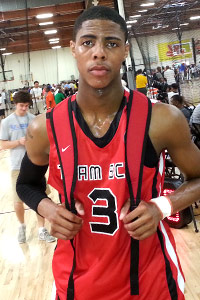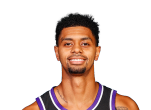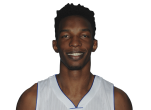Kiper: NFL Rookie Rankings
I've always kept a close eye on NFL rookies. Not only are these the players I've been studying and grading over the previous few years as they became NFL prospects, but I'm also just really interested to see how teams are using them.
I'm asking questions: Are the skills I thought I was seeing at the college level utilized the way I thought they would be? Do players "fit" schemes the way I thought they might? Do I need to light my draft grades on fire yet?
I learn things, too: Different systems and different types of players lead to new ideas of what a prospect looks like. Russell Wilson's success can shift my thinking. But so can Casey Hayward's or J.J. Watt's. This year, Insider has me ranking the rookies. So I'll take a stab, but here are a few things to remember:
• For Week 1, the sample size is extremely small, so I'm matchup context matters.
• Positional value matters, but overall performance and impact matter more.
• Total snap count matters. If a guy is used all the time, he wasn't just used for good matchups.
So like always, I went play-by-play through every game. Here's a start, and in two weeks I'll be back to line them up again. By then, I'm sure things will look different.
1. Eric Reid, S, San Francisco 49ers
There are easier ways to find your way in the NFL than to line up at free safety on a day when Aaron Rodgers is the opposing quarterback, constantly using his eyes to try to get you not just on the wrong foot, but into the wrong zip code. But Reid held up extremely well to start his career. Only three passes were completed near him, he picked off one and had another called back on a penalty. He showed great closing speed when catches were made in front of him, and he finished with five tackles. He also looked good on special teams, an area I'm always looking at for rookies. If you didn't think Reid was the best this week, just remember the context -- first game, replacing a veteran in Dashon Goldson, and facing Rodgers. Reid stepped in and rose to the occasion in a game that had far more intensity than your typical Week 1 matchup. Remember, this is a guy the 49ers actually traded up for. So far, so good.
2. Desmond Trufant, CB, Atlanta Falcons
Before you say I have the wrong Atlanta cornerback and that Robert Alford was the better rookie, check the snap counts. Trufant started his first game, was a guy Drew Brees had to be looking to exploit, and didn't even come off the field. Alford was great but saw about half the snaps because he was used in nickel situations. I was really impressed with Trufant's instincts and toughness. This kid plays with confidence. He did an excellent job in coverage -- Brees didn't pass for more than 50 yards throwing in his direction -- and also proved to be a solid tackler. Trufant is a complete corner with a Pro Bowl future.
3. Star Lotulelei, DT, Carolina Panthers
Seattle ran 26 times for a total of 70 yards on Sunday, and Lotulelei deserves his share of the credit. The Panthers went into the draft looking to upgrade the interior of the defensive line, and they succeeded. Lotulelei was extremely disruptive early in the game against Seattle and made his presence felt against both the run and the pass. I counted six impressive plays overall during the course of the game, a good number from that position. I see Lotulelei first as a run defender, but he moves well and can turn raw power into pocket disruption.
4. Sheldon Richardson, DT, New York Jets
Sure, the QB will get the credit, but remember that the Jets had the chance to win this game first because when Tampa Bay had the lead, it simply couldn't do a thing on offense -- especially when it came to running the ball and running clock. Credit Richardson, who looks capable of wrecking a run game, along with a very good Jets defensive line. (Tampa had 25 carries for 65 yards.) Richardson was active and extremely versatile against the Buccaneers in terms of how he deals with blocks. He has a ton of talent and is working hard to maximize that ability on every snap. And he played pretty much every snap on Sunday.
5. Tyrann Mathieu, CB, Arizona Cardinals
He always makes himself a part of the play. Sheer hustle led to Mathieu's saving a TD late in the first quarter when he dislodged the ball from Rams TE Jared Cook, after making up about 20 yards on a play in which he wasn't even covering Cook, and the Cardinals recovered the fumble in the end zone for a touchback. Cook scores, and it's not as close as it ended up. While Mathieu was called for a pass interference penalty and had a few soft tackle attempts, he looked good, and I counted just one pass caught thrown at him as the primary person in coverage. Maybe my buddy Jon Gruden was right, and the Honey Badger belonged in Round 1.
6. Geno Smith, QB, Jets
An important thing for Smith was to show he could hurt a defense by extending plays to throw. I think it was a little overstated that Smith is a "mobile" quarterback heading into the draft. He's a decent athlete, but if you think running is a part of his game he wants to rely on, you haven't watched him enough. But Smith can extend plays -- he's a smart mover, not a runner -- and that's what matters. He made good connections with Kellen Winslow, in particular, and seemed to rise to the moment when he knew a play needed to be made. He wasn't perfect by any stretch, but the Jets won the game and Smith made the plays when he had to.
7. Robert Alford, CB, Falcons
He came through with an impressive pass breakup early in the game, then followed it up with a pick late. The important thing is Alford looked like anything but a rookie against Brees and the Saints. He didn't get as many snaps because he worked more out of the subpackages in obvious pass situations, but he was never a liability. Despite the result, the Falcons have to be pleased with early returns with their two corner picks.
8. Jordan Mills, OT, Chicago Bears
How would you have answered this question a week ago: "Jay Cutler plays a full game against the Bengals -- how many times is he sacked?" The answer turned out to be zero, and Mills deserves his share of the credit. A lot of people have called Kyle Long the surprise stud on the O-line, but Long was just OK against Cincy, and it was Mills who has much greater positional value. In the fourth quarter, the fifth-round steal was involved in two critical plays. On fourth-and-1, the Bears picked up a key first down with Mills getting the necessary movement. On third-and-6, Bears RB Michael Bush didn't get the first down, but Mills sustained a block against Rey Maualuga and drew a personal foul penalty against Maualuga that iced the game. Great start.
9. D.J. Fluker, OT, San Diego Chargers
As far as I'm concerned, you can throw out any numbers that attempt to tell you how Fluker did in a vacuum. I say that because Fluker was average at best on film, but the guy he often had to block happens to be the best defensive player in football. And for most of three quarters, J.J. Watt wasn't a devastating factor in the game. Fluker got out of his stance quickly, showed good feet and played a fundamentally sound game overall. Now, Watt got him off balance plenty and certainly spent his share of time in the backfield, but Fluker can at least say Watt doesn't have a sack going into Week 2.















 Thought maybe you guys might wanna get a laugh in now before the season starts.
Thought maybe you guys might wanna get a laugh in now before the season starts.